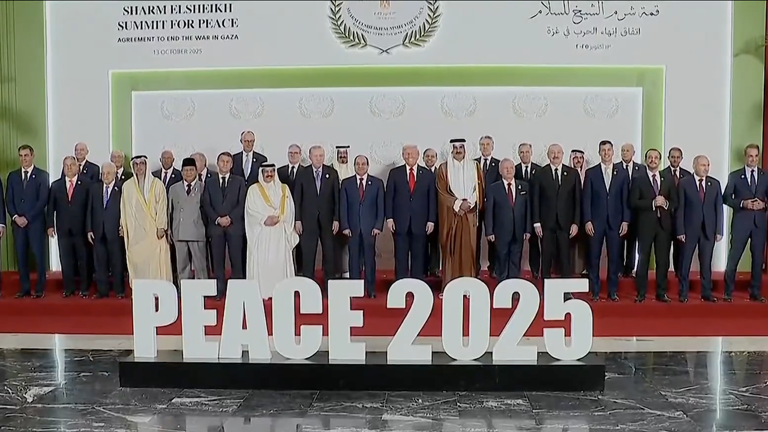In a landmark moment, the two-year war formally ended with a US brokered ceasefire. The agreement’s first phase saw Hamas release all 20 remaining living Israeli hostages and four bodies, while Israel freed nearly 2,000 Palestinian prisoners, marking a significant step toward peace in the volatile region.
The ceasefire was accompanied by a partial Israeli withdrawal from Gaza’s populated areas and a surge of humanitarian aid.
Under the deal, facilitated by Egypt and the International Committee of the Red Cross, Hamas handed over the remaining 20 hostages, abducted during the October 7, 2023 attacks, in two groups. In exchange, Israel released 1,968 Palestinian detainees, including 250 serving life sentences, 114 women, and 297 children. Palestinian leaders, while celebrating the prisoner release, raised concerns about over 8,000 detainees still held by Israel and reports of torture during captivity.
President Trump hailed the deal as the “dawn of a new Middle East”, envisioning a “golden age” for the region. "This is the beginning of everlasting harmony for Israel and all the nations of what will soon be a great region. Bibi, the world's a big place and you're this one small speck. You don't want everyone hating you, we'll make sure they don't." said President Trump in his triumphant October 13th speech before the Israeli parliament, the Knesset. "We will love Israel more than ever before. Israel will live and thrive forever. I’m with you all the way." he told Israeli officials.
As celebrations unfold, both sides eye a fragile path to lasting peace. The agreement, signed in Sharm El-Sheikh, Egypt, alongside President Abdel Fattah el-Sissi, has sparked global optimism but faces challenges. Phase two requires full Israeli withdrawal and Hamas disarmament, as well as a $53 billion rebuilding effort of which the US and European Union are anticipated to contribute a combined total of around $10–15 billion.
A multinational peacekeeping force, formally known as the International Stabilization Force (ISF), is set to oversee the ceasefire, facilitate reconstruction, and ensure long-term stability. The ISF will support a transitional Gaza International Transitional Authority (GITA) and a locally recruited Palestinian civilian police force, enabling a phased Israeli withdrawal from most of the territory. Deployment is expected to begin within 60 days of phase one completion, pending a UN Security Council resolution for its mandate, with initial focus on border security along the Gaza-Israel and Gaza-Egypt frontiers. Hurdles include Israeli insistence on veto power over deployments near borders, Hamas' resistance to "foreign guardianship," and UN funding strains from US cuts. Experts warn that without swift implementation, the force risks becoming another stalled mission like UNIFIL in Lebanon. UN Secretary-General António Guterres urged "This must translate into protection for civilians and a permanent end to hostilities."
But peace comes with a price to US tax payers. According to a comprehensive report from Brown University's Costs of War Project (released October 6th), the US has provided at least $21.7 billion in military aid to Israel over the two years since October 7th, 2023.
Despite the breakthrough, skepticism lingers due to past violations of peace agreements by both sides. Israel has repeatedly been criticized for expanding West Bank settlements and conducting airstrikes in Gaza, undermining agreements such as the 2014 ceasefire. Conversely, Hamas has violated deals by launching rockets, digging attack tunnels, and rearming during lulls, as seen after the 2021 ceasefire. These betrayals fuel distrust, casting a shadow over the current deal’s long-term viability.

